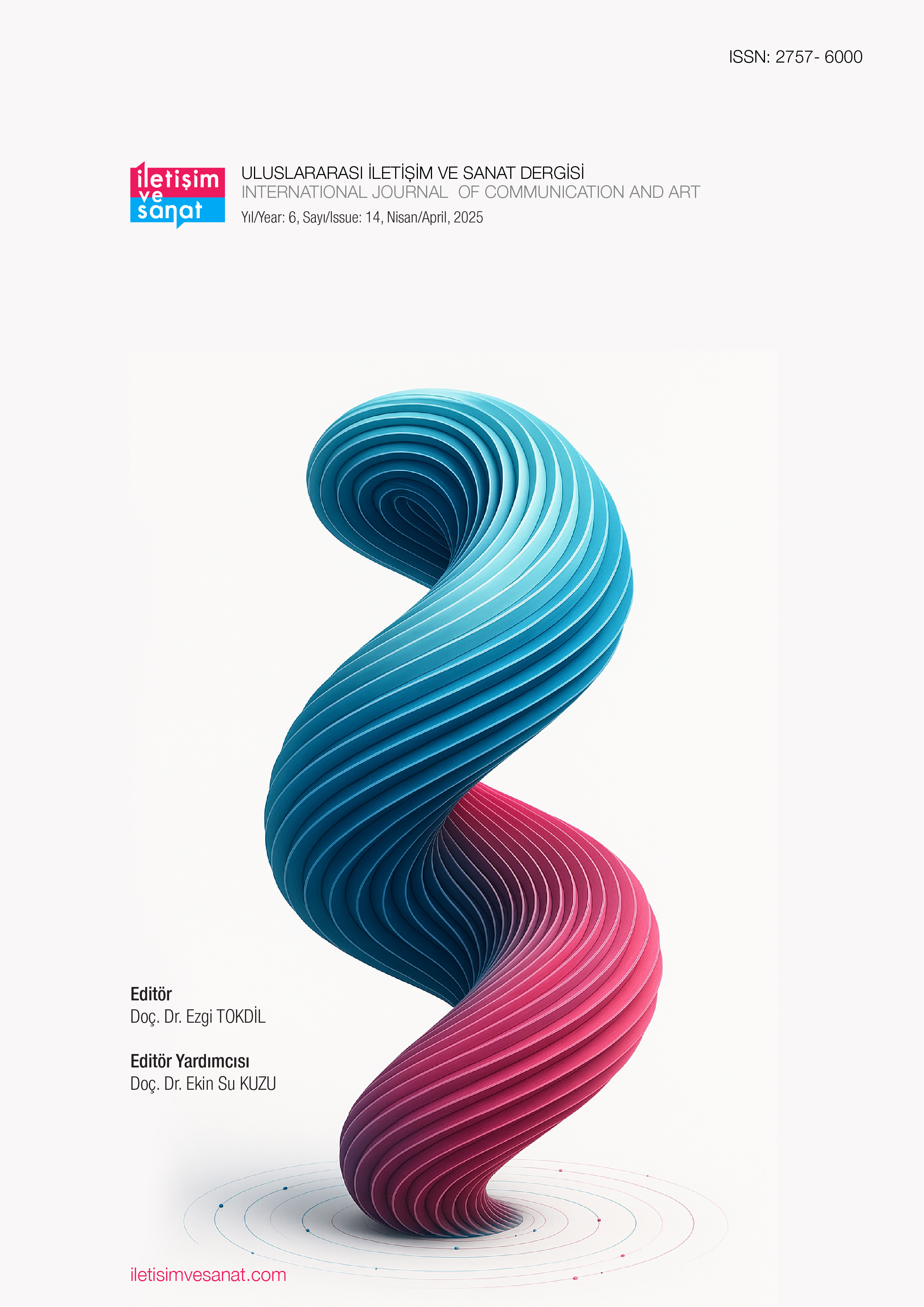Author :
Abstract
Mitler, sanatın konusu olarak sanat tarihi boyunca işlenmiştir. Bunlardan bir tanesi olan Oidipus miti, Sophokles’in eserlerine konu olurken, Batı düşünce ve kültür dünyasında çeşitli alanlarda konu edilmiştir. Oidipus anlatısı, insanın bilme haline doğru yönelmesi ancak Tanrılar tarafınca kaderinde ne varsa onu yaşaması gerektiğini içermektedir. Bu sebepten Oidipus, insan merakının ve insan becerilerinin ne olursa olsun kaderini aşamayacağını anlatmaktadır. Çalışma Oidipus’un Sophokles’ten on dokuzuncu yüzyıl tiyatrosuna, Hegel’den çağdaş felsefeye uzanan kültür tarihinde nasıl alımlandığını konu etmektedir. Bu bilgilerin oluşturduğu çerçeve ile seçilmiş olan resimlerde Oidipus’un nasıl yorumlandığını araştırmaktadır. Bu araştırmayı yaparken resimlerin Oidipus anlatısıyla olan ilişkilerini belirleme esas alınmaktadır. Bu kapsam açıklayıcı olması adına üç durum öne sürülmektedir: 1-Klasik Batı resminin anlatı ve formlar zorunluluğunda dönemin getirdiği seçimlerle resimler arası kurulan ilişki. 2-Modernist resmin akımlar arası, Klasizm veya gelenek olarak söz edilebilecek birikimle gerilimli ilişkisi ve aynı zamanda ressamın içselliğinin ürettiği gerilimli durumlar. 3- Seçmeci, eleştirel, kişisel, köksüzlük talebinde olan bir anlatı resim ilişkisi. Çalışma kapsamında seçilmiş olan resimlerin de yorumlamasında bu kısımdan çıkarsanan düşünceler esas görülmektedir. Bu kapsamda Oidipus’un 1-tragedyadaki anlatıyı takip ederek yorumlanan bir kahraman ile 2-psikanalitik anlatıdaki sembolik figür olarak belirleyici olduğu söylenebilir. Oidipus’a yaklaşma yolları olarak felsefi ve antropolojik ile psikanalitik bakış, Oidipus’u üretmenin yolları olarak görülmektedir. Sonuç olarak -Oidipus, metnin getirdiği anlam genişliğini destekleyen bir görsel sunumla ifade edildiği ve varılmıştır. Yine kimi resimlerde Oidipus anatısının bir parçasının önemsendiği görülmüştür. Bundan başka Oidipus anlatısına ressamın bakış açılarının katkı sağladığı tespit edilmiştir.
Keywords
Abstract
Myths have been processed throughout the history of art as a subject of art. One of these, the Oedipus myth, has been the subject of Sophocles' works, and has been the subject of various areas in the Western thought and culture world. The Oedipus narrative includes that man should turn towards the state of knowledge but live what is destined by the Gods. For this reason, Oedipus tells us that human curiosity and human skills cannot overcome his destiny no matter what. The study examines how Oedipus has been received in the cultural history extending from Sophocles to nineteenth-century theater, from Hegel to contemporary philosophy. With the framework created by this information, it investigates how Oedipus is interpreted in the selected paintings. In doing this research, the relationship between the paintings and the Oedipus narrative is taken as a basis. Three situations are put forward in order to be explanatory in this scope: 1- The relationship established between the paintings and the choices brought by the period in the narrative and form necessity of Classical Western painting. 2- The tense relationship of modernist painting with the accumulation of movements that can be referred to as Classicism or tradition, and also the tense situations produced by the interiority of the painter. 3- A narrative painting relationship that is selective, critical, personal, and demands rootlessness. The ideas derived from this section are also seen as the basis in the interpretation of the paintings selected within the scope of the study. In this context, it can be said that Oedipus is determinant as 1- a hero interpreted by following the narrative in tragedy and 2- a symbolic figure in the psychoanalytic narrative. As ways of approaching Oedipus, philosophical, anthropological and psychoanalytic perspectives are seen as ways of producing Oedipus. As a result, -Oedipus is expressed and concluded with a visual presentation that supports the breadth of meaning brought by the text. Again, it has been seen that a part of the Oedipus narrative is given importance in some paintings. In addition, it has been determined that the painter's perspectives contribute to the Oedipus narrative.





